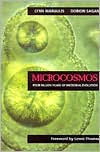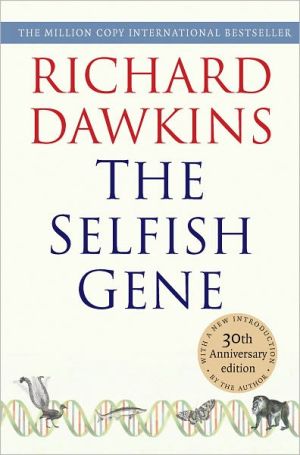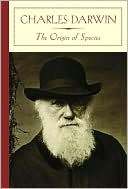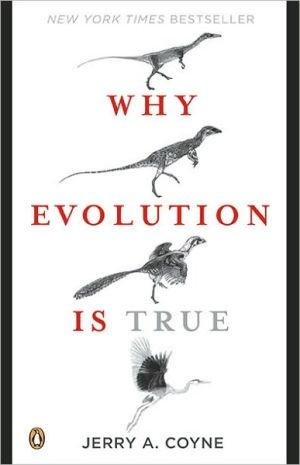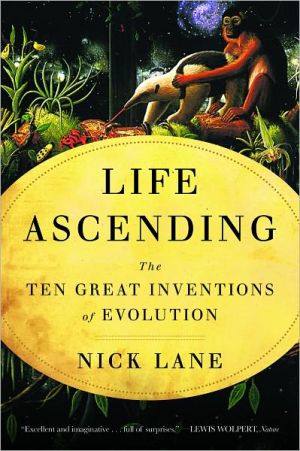Microcosmos: Four Billion Years of Microbial Evolution
BACK IN PRINT WITH A REVISED PREFACE Microcosmos brings together the remarkable discoveries of microbiology of the past two decades and the pioneering research of Dr. Margulis to create a vivid new picture of the world that is crucial to our understanding of the future of the planet. Addressed to general readers, the book provides a beautifully written view of evolution as a process based on interdependency and thei nterconnectedness of all life on the planet.
Search in google:
BACK IN PRINT WITH A REVISED PREFACE Microcosmos brings together the remarkable discoveries of microbiology of the past two decades and the pioneering research of Dr. Margulis to create a vivid new picture of the world that is crucial to our understanding of the future of the planet. Addressed to general readers, the book provides a beautifully written view of evolution as a process based on interdependency and thei nterconnectedness of all life on the planet. Publishers Weekly A century after Darwin theorized that we descended from ape-like ancestors, science has in just the last two decades contrived an awesome description of our even more primordial development from microbes. Boston University biologist Margulis and science writer Sagan here produce a stunning, complex chronicle of those four billion years, from Hadean and Archaeon aeons when matter became ``animated'' and the mysteries we now call DNA and RNA became ``the language of nature,'' to the first appearances of plant and animal life, including hominids. So immensely detailed is this elucidation of the developing microcosm (with its emphasis on natural selection and symbiosis in the bacterial world) that even advanced science readers will find the book difficult. But it is an important one, a comprehensive, popularized treatment of evolutionary microbiology spelling out a dimension that Darwin possibly never imagined, and proposing that only an understanding of the microcosm from which life sprang can make possible our ultimate leap beyond Earth into a human-devised supercosm. Photos. First serial to The Sciences. (June
From the Foreword by Dr. Lewis Thomas: \ "Microcosmos is nothing less than the saga of the life of the planet. Lynn Margulis and Dorion Sagan have put it all together, literally, in this extraordinary book, which is unlike any treatment of evolution for a general readership that I have encountered before. A fascinating account that we humans should be studying now for clues to our own survival."\ Author Biography: Lynn Margulis is Distinguished University Professor at the University of Massachusetts, Amherst and a member of the National Academy of Sciences. Dorion Sagan is the author of Biospheres and coauthor, with Lynn Margulis, of What Is Life? (1996).
Foreword9Preface13Acknowledgments25Introduction: The Microcosm271Out of the Cosmos392The Animation of Matter473The Language of Nature594Entering the Microcosm695Sex and Worldwide Genetic Exchange856The Oxygen Holocaust997New Cells1158Living Together1279The Symbiotic Brain13710The Riddle of Sex15511Late Bloomers: Animals and Plants16712Egocentric Man19313The Future Supercosm235Notes277Index285
\ Publishers Weekly\ - Publisher's Weekly\ A century after Darwin theorized that we descended from ape-like ancestors, science has in just the last two decades contrived an awesome description of our even more primordial development from microbes. Boston University biologist Margulis and science writer Sagan here produce a stunning, complex chronicle of those four billion years, from Hadean and Archaeon aeons when matter became ``animated'' and the mysteries we now call DNA and RNA became ``the language of nature,'' to the first appearances of plant and animal life, including hominids. So immensely detailed is this elucidation of the developing microcosm with its emphasis on natural selection and symbiosis in the bacterial world that even advanced science readers will find the book difficult. But it is an important one, a comprehensive, popularized treatment of evolutionary microbiology spelling out a dimension that Darwin possibly never imagined, and proposing that only an understanding of the microcosm from which life sprang can make possible our ultimate leap beyond Earth into a human-devised supercosm. Photos. First serial to The Sciences. June\ \ \ \ \ Library JournalBeginning with the chemistry of ``minimal life,'' Margulis details the contributions of the microbial world to the evolution of life on our planet. Much of this book focuses on the role of symbiosis in cell evolution, one of the most important contemporary evolutionary concepts. Concluding chapters discuss man's place in our present ecosystem, our continued dependence on microorganisms, and our debt to our humble microbial origins for the way our physiology functions. No other book for the lay reader or interested professional interprets this material as thoroughly or accurately. Margulis, a respected authority in this field, is the author of Symbiosis in Cell Evolution , an advanced text. Highly recommended. Frank Reiser, Biology Dept., Nassau Community Coll., Garden City, N.Y.\ \
